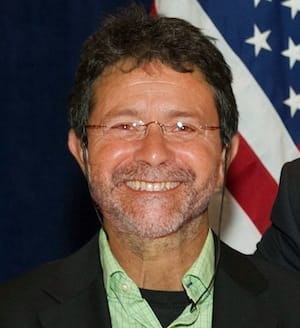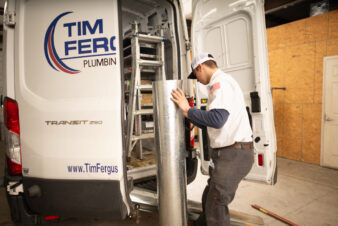 The Department of Energy (DOE) has just proposed a long-delayed energy efficiency standard for the natural gas furnaces heating millions of U.S. homes. This is good news for our heating bills and the environment, but it could be even better.
The Department of Energy (DOE) has just proposed a long-delayed energy efficiency standard for the natural gas furnaces heating millions of U.S. homes. This is good news for our heating bills and the environment, but it could be even better.
The DOE proposal would set a national minimum efficiency level of 92% for gas furnaces beginning in 2021 — which means 92% of the gas burned in the furnace is converted into useful heat — and deliver cumulative net consumer savings of up to $19 billion. DOE estimates that the 2.78 quadrillion Btus saved by the proposed standards would deliver cumulative emissions reductions of 137 million metric tons of carbon dioxide.
Why is this proposed standard so important?
• Over 40 million U.S. households are heated with natural gas furnaces.
• Over 40% of all residential energy use is for home heating.
• The projected reductions in consumer costs and carbon emissions are enormous, and an important part of an economic, energy efficient future.
While this proposed standard is a major step in the right direction from the current 80 percent standard, it falls short of the full economic potential indicated by DOE’s own analyses – which suggest a 95% efficiency level is best. In addition, there are furnaces on the market that can deliver 98 percent efficiency.
Now that DOE has offered a proposed standard, NRDC will be working closely with utilities, manufacturers, installers, and consumer groups to address possible concerns and encourage the federal agency to adopt the most cost-effective and environmentally beneficial final standard.
A long history
The standard proposed today not only represents large potential for boosting U.S. energy efficiency, it also marks a hard-fought victory for NRDC and fellow energy efficiency advocates who have worked for years to get the standard updated from the last significant revision 25 years ago.
It’s been decades since the original 1987 efficiency standard for the most commonly used gas furnaces was significantly updated. That standard went into effect in 1992, and DOE let it stand until 2007. Despite its legal obligation to set standards at a maximum level that is technologically feasible and cost-justified, DOE raised the standard in 2007 by only 2 percent, from 78% to 80%. During this time, manufacturers had developed much higher efficiency, cost-effective furnaces with efficiency of 90 percent and above.
Aware that a standard of at least 90 percent could deliver greater consumer and environmental benefits, NRDC worked with consumer groups, state governments and manufacturers to jointly propose a higher standard in 2009. In 2011, DOE proposed a 90% efficiency level for furnaces in the 30 coldest states, letting the 80% standard remain for southern and southwestern states.
With that standard scheduled to go into effect in May 2013, some stakeholders raised strong concerns, including about potentially very high cost of installation in a small fraction of housing types and resulting unintended consequences. NRDC worked intensively and collaboratively with diverse stakeholders to address those concerns, and made significant progress, but it was not soon enough, and one group brought a lawsuit. In April 2014, a settlement was reached under which DOE has proceeded with the rulemaking process to create a new standard.
The new proposed standard comes eight months after DOE issued a standard to boost the energy efficiency of furnace fans, also called air handlers, by about 40%. These devices consume nearly 10% of total household electricity, and since all forced air systems use them—not only for heat but also for air conditioning in many cases, a big boost in their efficiency translates into big consumer savings as well as significantly lower carbon emissions. Put another way, furnace fans sold over the next three decades will save as much electricity cumulatively as 47 million homes use in one year, according to the Department of Energy.
Going forward
Recognizing that some stakeholders continue to raise important concerns, NRDC has been working with utilities, manufacturers, consumer groups and other diverse interests in advance of the proposed standard. The aim is to identify and develop opportunities that may help DOE adopt a final standard that is even better than the proposal, and to do so with broad support.
Today’s new furnace efficiency standard, coupled with the first-ever standard for furnace fan efficiency, are estimated to save consumers about $47 billion over three decades, and to reduce cumulative carbon emissions by over 300 million metric tons.
Those are outcomes worth working for.
Robin Roy is the director of Building Energy and Clean Energy Strategy at the Natural Resources Defense Council.




Join the conversation: